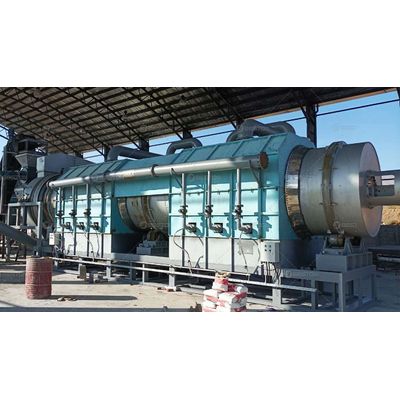

- Home
- Companies
- Beston Group Co., Ltd.
- Articles
- Environmental Benefits of Using a Palm ...

Environmental Benefits of Using a Palm Shell Charcoal Machine
The palm oil industry generates a substantial amount of agricultural residue, with palm shells being one of its most underutilized byproducts. The introduction of carbonization equipment tailored to biomass, such as the palm shell charcoal machine, offers an innovative pathway to transform this waste into a high-value product while significantly reducing environmental impact.
Valorization of Agricultural Waste
Traditionally, palm shells are either discarded or burned openly, contributing to air pollution and greenhouse gas emissions. A palm shell charcoal machine diverts this waste stream into a controlled pyrolysis process, producing biochar instead of smoke and ash. This not only mitigates the environmental burden of waste disposal but also enables resource recovery.
By converting biomass into biochar, the system supports waste minimization strategies and aligns with the principles of a circular economy. This approach avoids landfill use and open incineration, both of which are significant sources of methane and black carbon emissions.
Reduction in Carbon Footprint
Carbonization of palm shells results in the sequestration of a considerable amount of carbon. Unlike combustion, where carbon is rapidly released into the atmosphere as CO₂, pyrolysis traps carbon in the form of stable charcoal. When applied as a soil amendment or used as industrial fuel, this biochar acts as a long-term carbon sink.
A palm shell charcoal machine that operates on a continuous basis further enhances carbon efficiency. By utilizing the syngas generated during pyrolysis as a heat source, it achieves thermal self-sufficiency and lowers reliance on fossil fuels. This integrated approach reduces the net carbon emissions associated with both energy generation and waste management.
Improved Air Quality and Emission Control
Equipped with advanced gas treatment systems, modern palm shell charcoal machines capture and neutralize airborne pollutants such as tar, acidic vapors, and particulate matter. These emissions, if left uncontrolled in traditional burning methods, contribute to respiratory issues and ecological degradation.
Some units incorporate flue gas recirculation and ceramic filtration, enabling compliance with international environmental standards. As a result, communities surrounding production sites benefit from improved air quality and lower exposure to harmful compounds.
Soil and Water Regeneration through Biochar Use
The environmental benefits extend beyond the production facility. The biochar generated from palm shells possesses high porosity and cation exchange capacity, making it an ideal soil amendment. When integrated into agricultural land, it enhances nutrient retention, promotes microbial activity, and improves water holding capacity.
This not only reduces the need for chemical fertilizers—which often contribute to groundwater contamination—but also helps rehabilitate degraded land. In regions affected by deforestation or nutrient loss, biochar use fosters long-term soil health and resilience.
Conclusion
Deploying a palm shell charcoal machine transforms an agricultural byproduct into an environmentally valuable resource. Through carbon sequestration, emissions reduction, and biochar application, it addresses multiple ecological challenges simultaneously. As sustainability becomes a global priority, such machines offer practical, scalable solutions for cleaner energy and regenerative agriculture.
